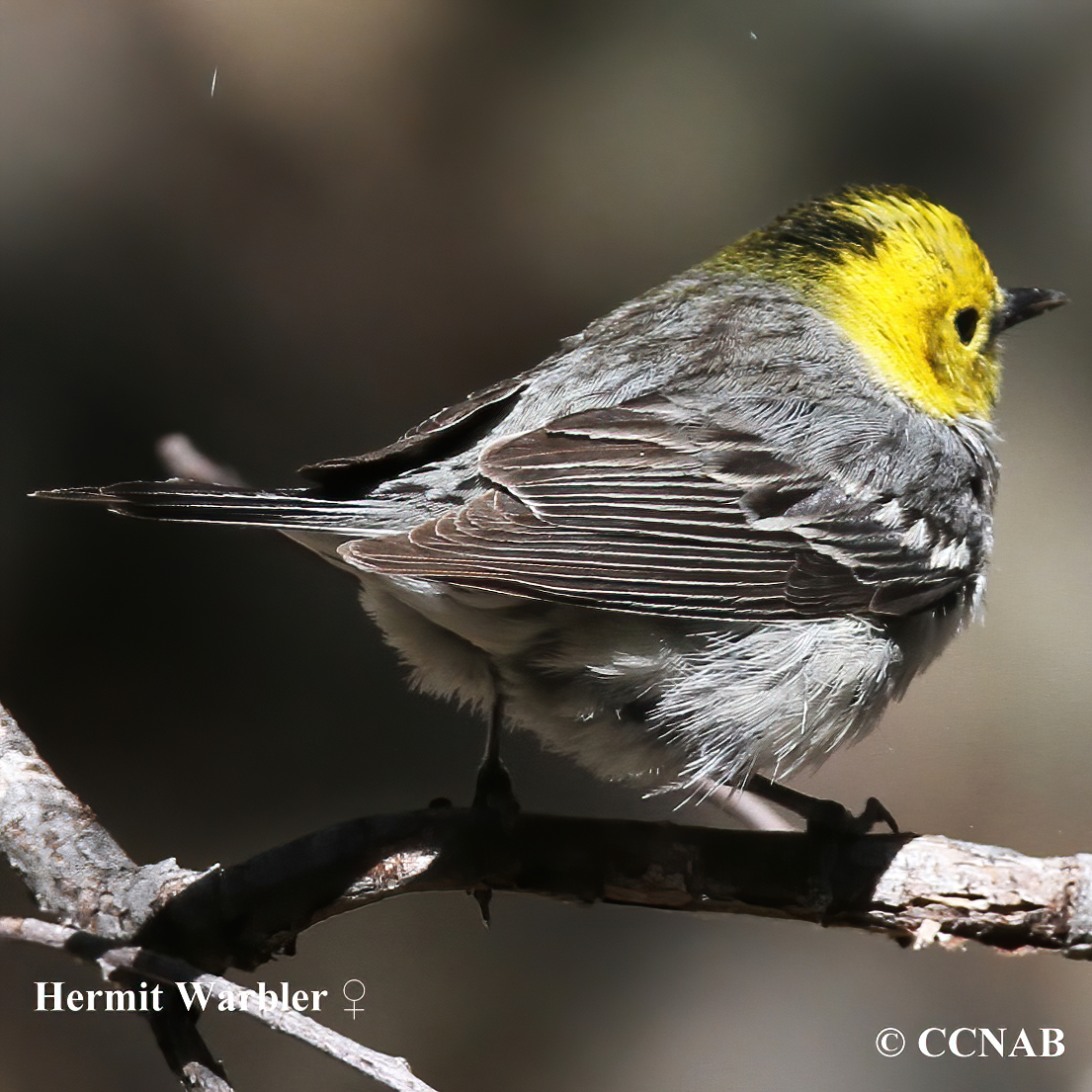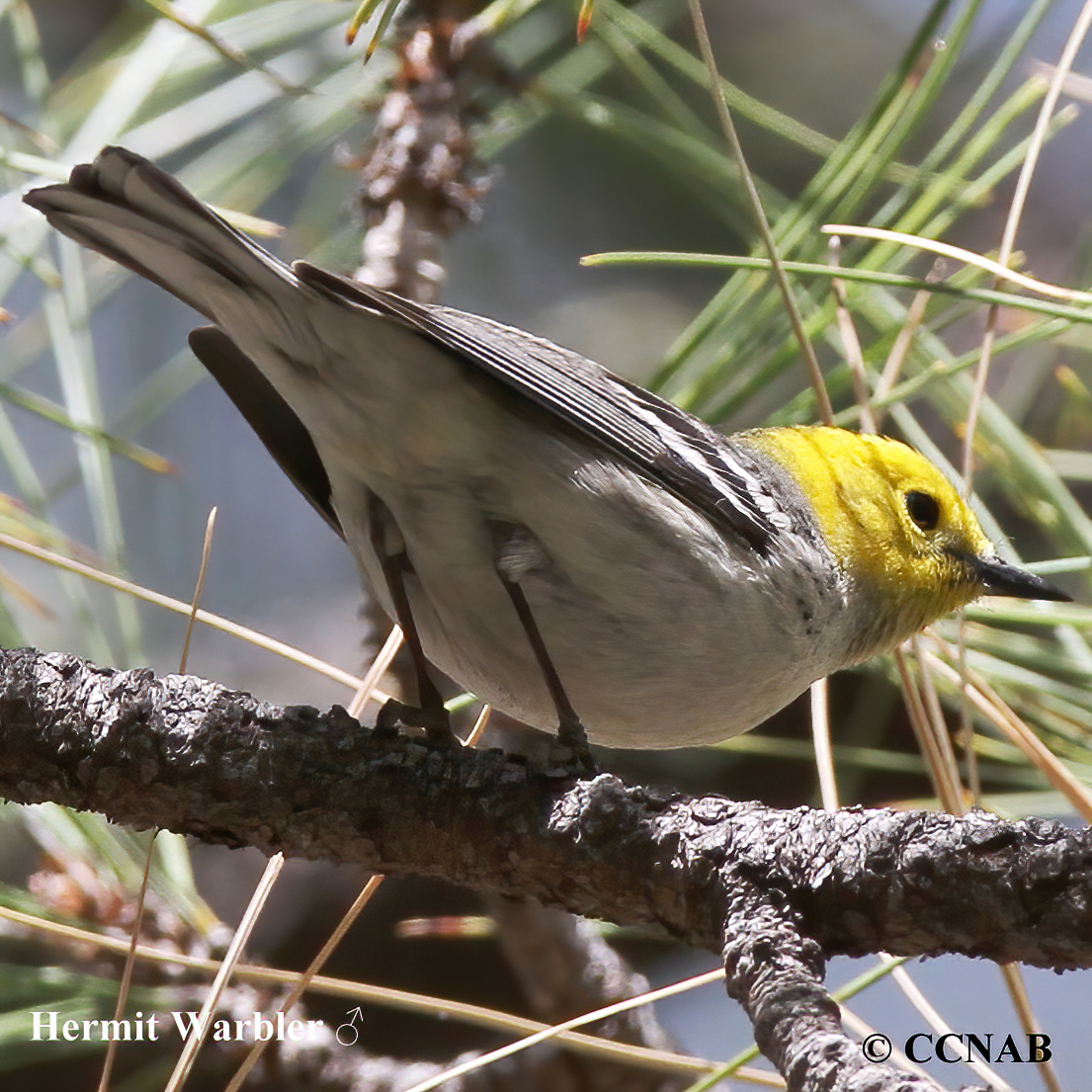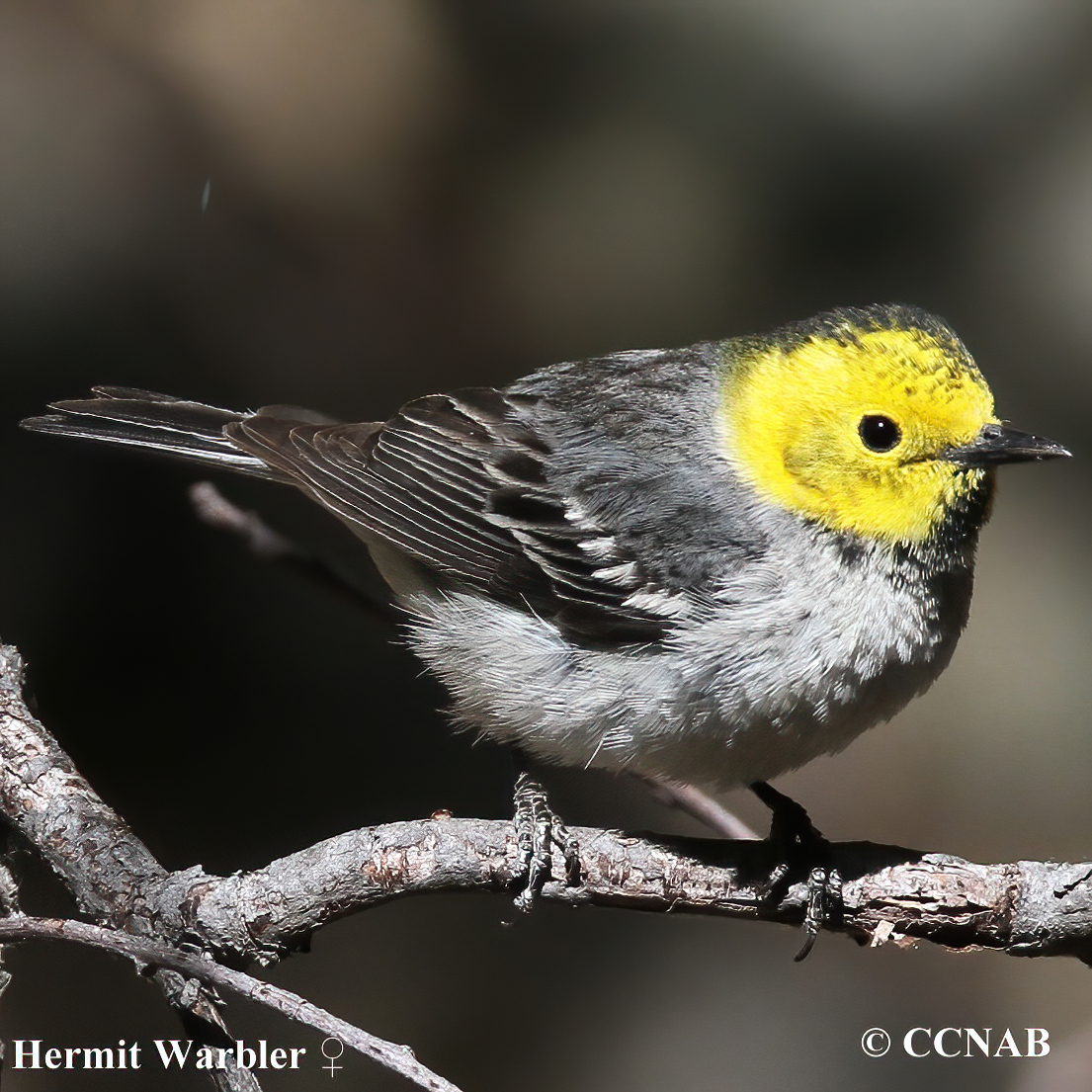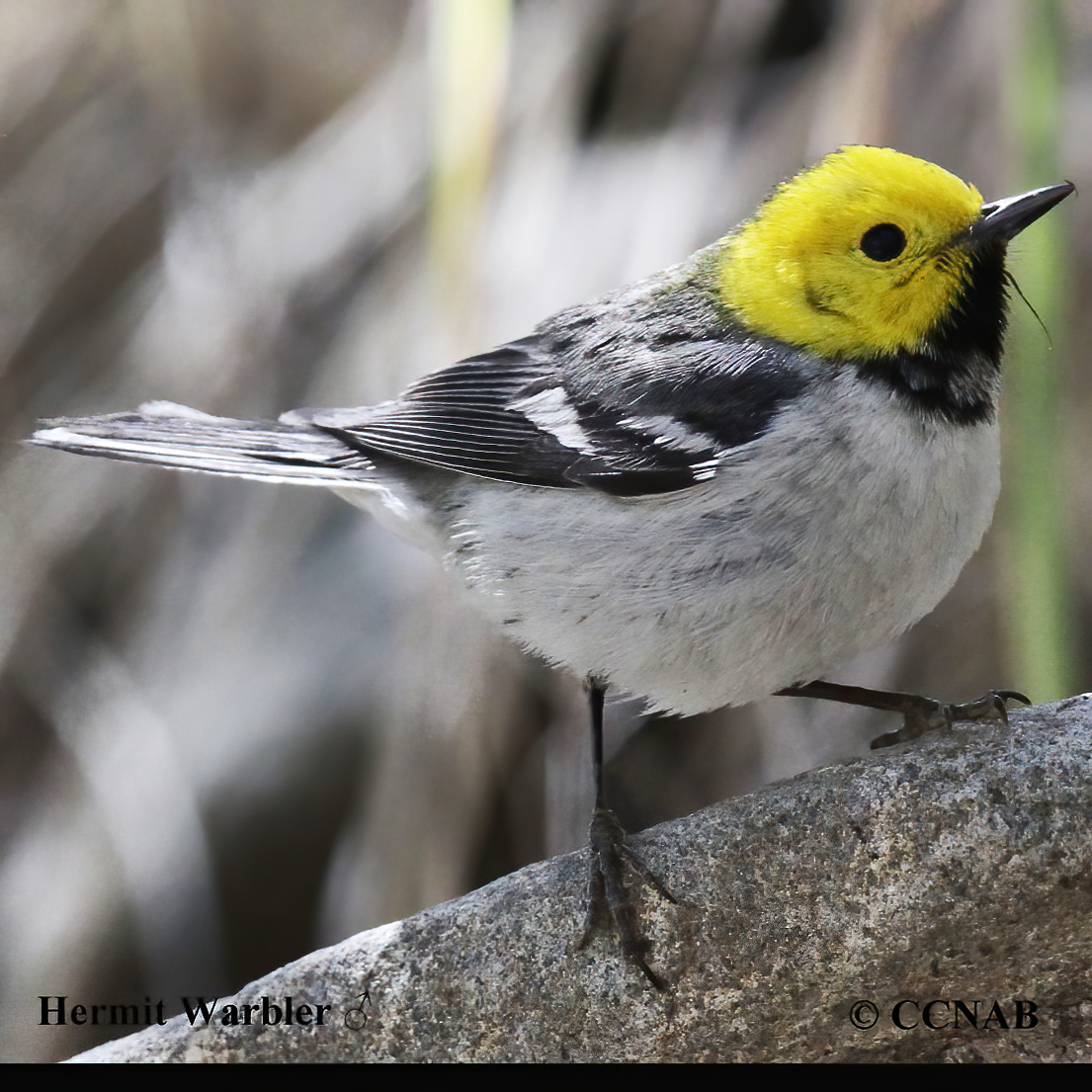North American Bird Search Box
This search box can be used to find bird species using bird's english, french or latin name, or to identify bird by its 4 letter Alpha Code
Field Guide for all the Birds of North America
Hermit Warbler
4 Letter (english names) Alpha Code: HEWA (1)
Paruline à tête jaune
Setophaga occidentalis
Information, images and range maps on over 1,000 birds of North America, including sub-species, vagrants, introduced birds and possibilities
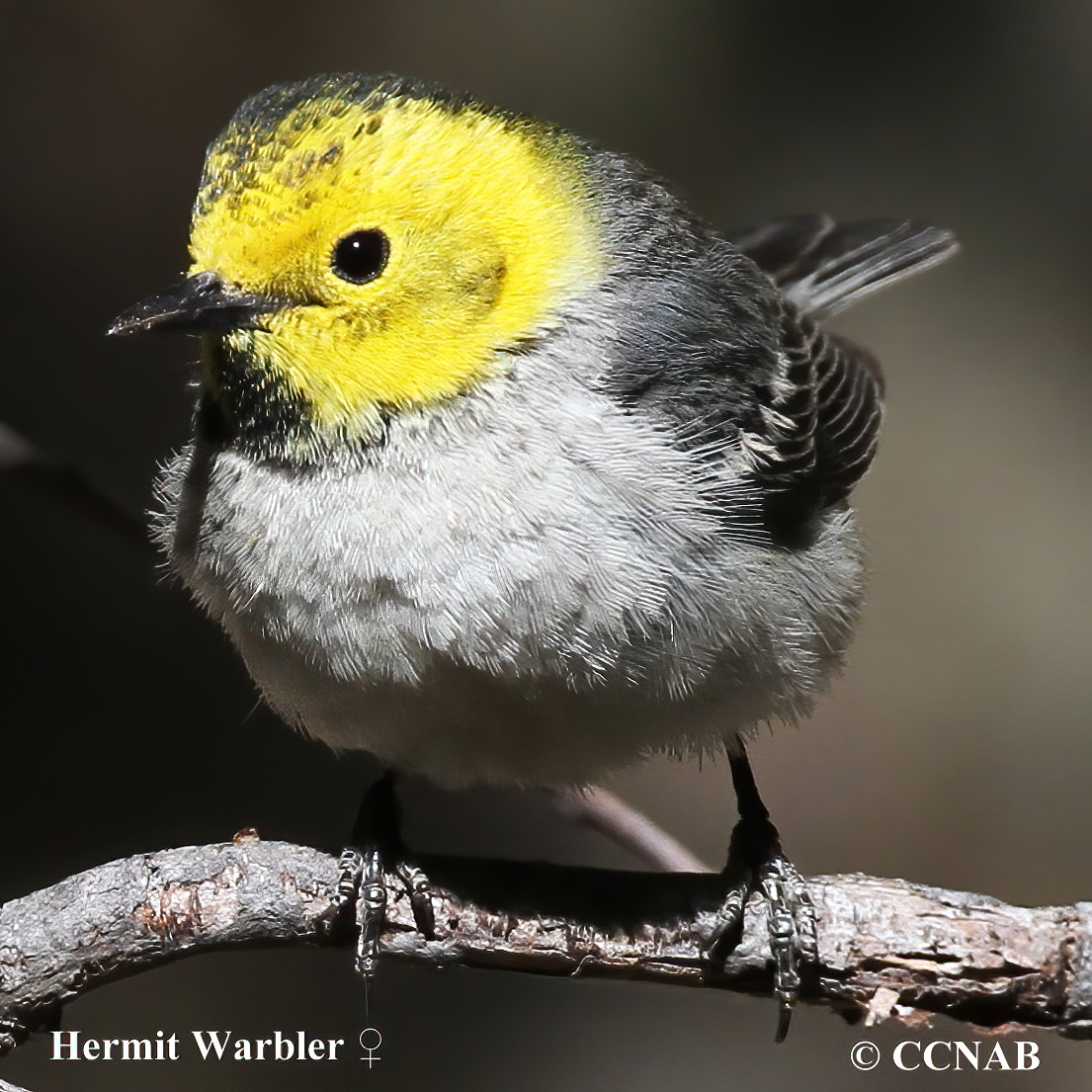
Species: The Hermit Warbler (Setophaga occidentalis) prefers coniferous-type forests. As it is a bird that feeds high up in mature trees, it is not easily observed. It feeds solely on insects which it gleans from branches or even hawks them on the wing. Occasionally, it hybridizes with the Townsend's Warbler, which shares the Hermit Warbler's northern range. The hybrid offspring resembles the Hermit Warbler more than the Townsend's Warbler, but it shows green on its back and yellow on its breast. It is not endangered and fairly common in its range.
Distinctions: The male has a bright yellow face, small black crown, nape and throat. Black and gray wings and tail, two white wingbars, light gray mottled streaking on a light gray breast and undertail coverts. The female is similar to the male but duller in appearance and juveniles might show more green than black and gray on the back.
Voice: Single call note tzip, song sound like "weezy, weezy..., repeated over.
Nesting: Three to five creamy white coloured eggs, with brown markings. The nest is built high in mature conifers. Nest is composed of strips of bark, rootlets, leaves and lined with fine grasses and hairs.
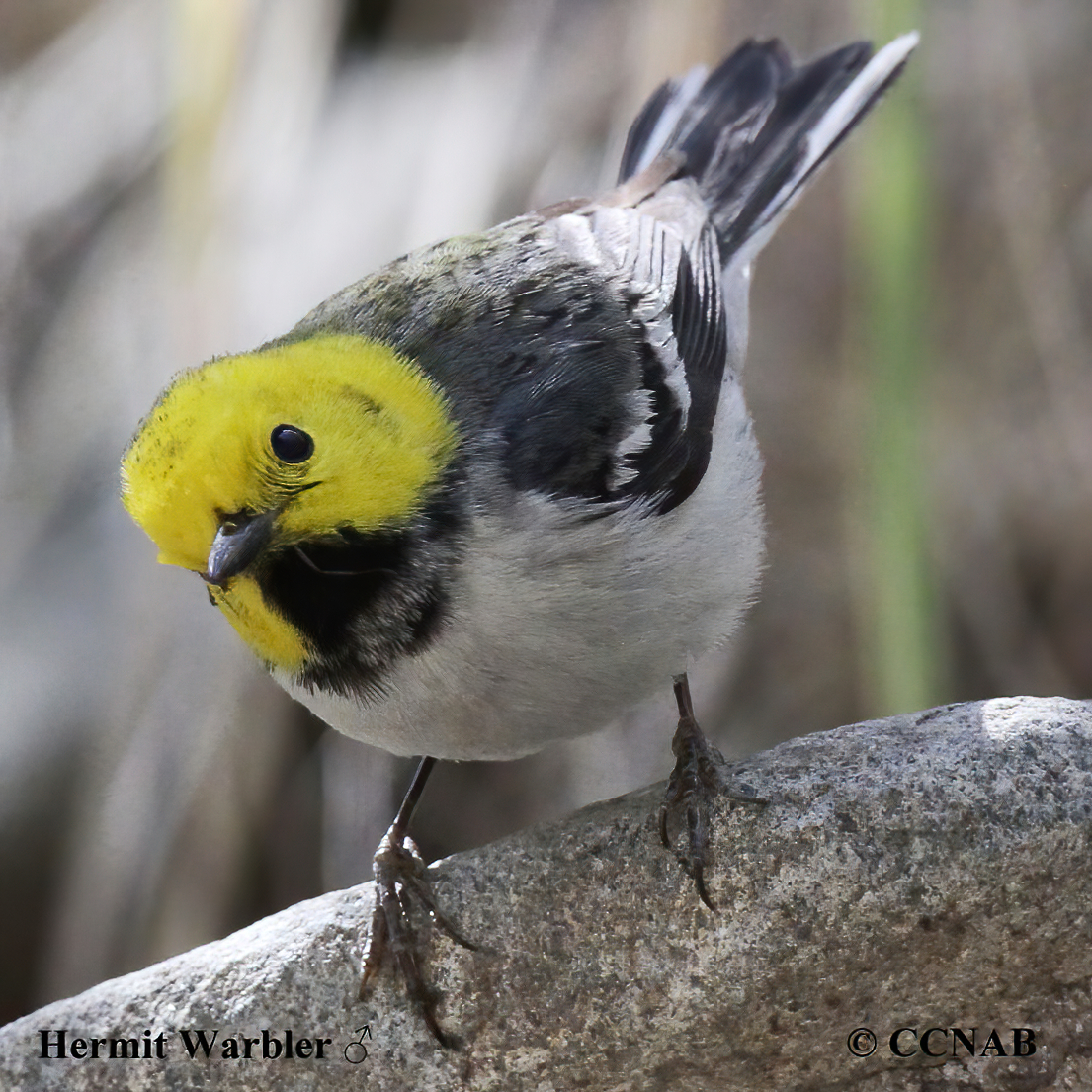
Life, Habitat & Pictures of North American Warblers
| B L | W W | W | Family | Latin Name |
|---|---|---|---|---|
| 5" 12.7cm | 8" 20.3cm | 0.35 oz 9.9g | Parulidae | Setophaga occidentalis |
- Summer
- Year Around
- Winter
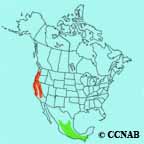
Distribution: Prefers mature pine in mountainous landscape and it is seen from the state of Washington, south along the western slope of the Rocky Mountains, through Oregon, reaching into central California and touching on Nevada's western border. Migrates into Mexico and Central America during the winter months.
References to Other Bird Sites:
ABA - American Birding Association This site represents an organization that maintains official records of all birds species that have been proven to have been seen inside the perimeters of the North American Continent and the surrounding bodies of water. Regular revised versions are posted to keep the bird list current at all times. This is the list used by all serious birders over their lifetime. You may be aware of the movie called the "Big Year". It was with this list that all the competing birders used in an attempt to set a new record as to how many bird species that could be seen by an individual birder in one calendar year.
